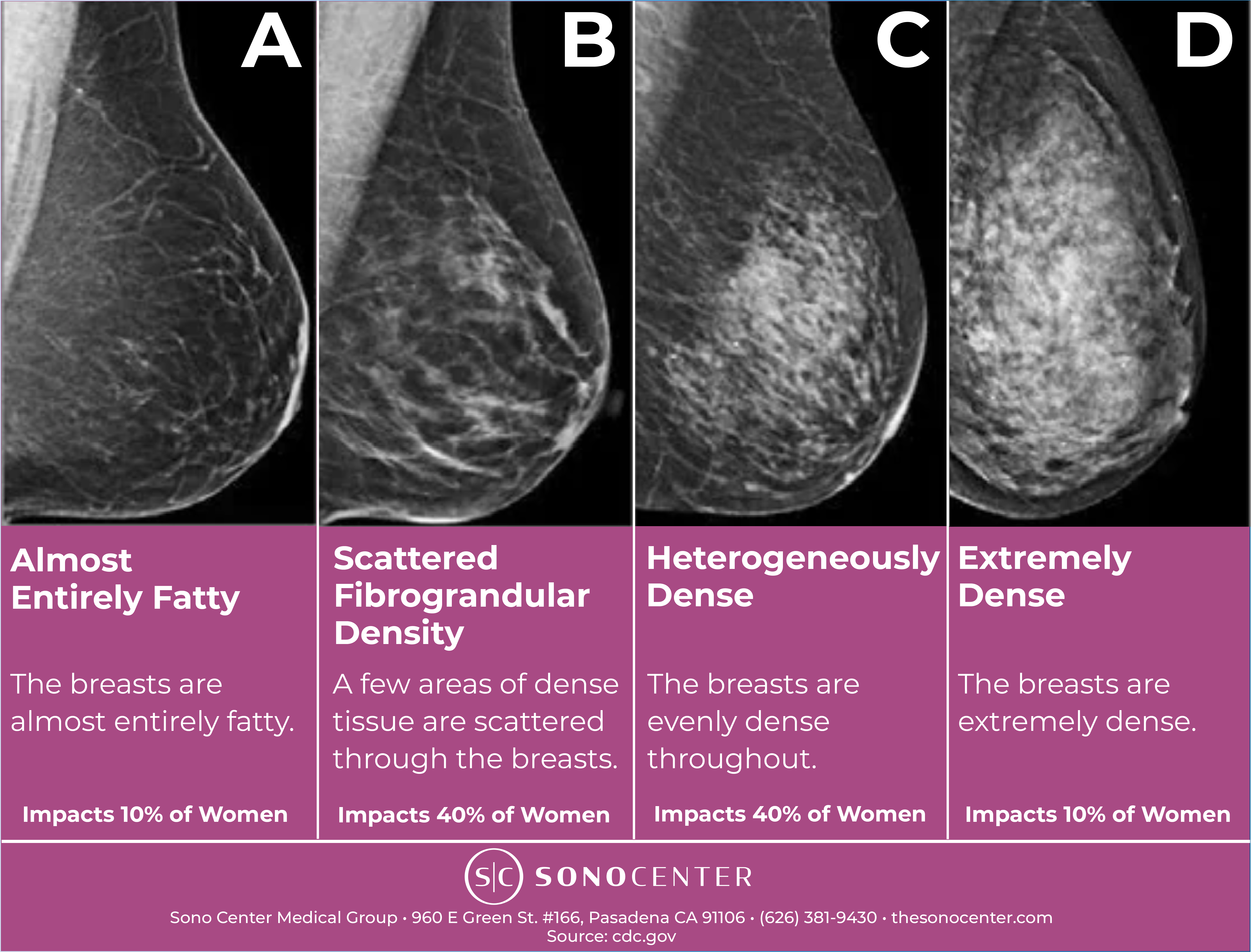As of September 10, 2024, the US Food and Drug Administration (FDA) has implemented a new landmark ruling requiring all mammography facilities to notify patients about their breast density following a mammogram. This change, which went into effect on Tuesday, is an important step toward improving breast cancer detection and ensuring that patients are better informed about their breast health. But what exactly is breast density, and why is it so important?
What Is Breast Density?
Breast density refers to the amount of fibrous and glandular tissue compared to fatty tissue in a woman’s breasts. Dense breasts contain more fibrous and glandular tissue, which can make it more difficult to detect cancer through standard mammography. On a mammogram, dense tissue appears white, as does cancer, making it harder to distinguish between normal dense tissue and potential abnormalities like tumors.
According to the American Cancer Society, nearly half of all women over the age of 40 who have mammograms are found to have dense breasts. While breast density is completely normal and common, women with dense breasts are at a higher risk of developing breast cancer. This is why the FDA’s new rule requiring patients to be notified of their breast density is so critical—it empowers women to take the necessary steps to monitor their health more closely.
A Closer Look at Breast Density
Breast density is a reflection of the amount of fibrous and glandular tissue in a woman’s breasts as compared with the amount of fatty tissue. On a typical mammography report, breast density will be assigned to one of four categories, according to the CDC:
- Breasts are nearly entirely fatty (10 percent of women)
- Some areas of dense tissue can be seen throughout the breasts (40 percent of women).
- Breasts are evenly dense throughout (40 percent of women); may be noted as “heterogeneously dense” on the report
- Breasts are very dense (10 percent of women)

Women who fall into the top two categories are considered as having non-dense, low-density, or fatty breasts, while women who fall into the second two categories are considered as having high-density or dense breasts.
Why Additional Imaging Is Necessary
For women with dense breast tissue, mammograms alone may not provide enough clarity to detect cancer. Dense tissue can mask tumors, leading to missed diagnoses or delayed detection. This is where additional imaging options come into play, offering a more thorough examination that can improve cancer detection rates.
One of the most advanced and effective supplemental imaging options is the SonoCine Automated Whole Breast Ultrasound. Unlike traditional ultrasounds, which are often operator-dependent, SonoCine uses an automated system to capture a complete, consistent view of the entire breast. This technology is particularly beneficial for women with dense breasts, as it allows for better visualization of potential tumors that may be hidden in dense tissue during a standard mammogram.
Benefits of SonoCine Automated Whole Breast Ultrasound
Improved Detection Rates: Studies have shown that adding ultrasound to mammography significantly increases the detection of small, invasive cancers that are often missed in dense breasts. The automated nature of SonoCine provides a more comprehensive scan of the entire breast, ensuring nothing is overlooked.
Non-Invasive and Comfortable: The SonoCine ultrasound is a non-invasive, radiation-free exam. It’s painless and comfortable, making it a stress-free experience for women who may be anxious about additional screenings.
Increased Accuracy for Dense Breasts: Dense breast tissue can obscure cancer on a mammogram, but SonoCine’s high-resolution imaging is able to penetrate dense tissue, providing a clearer and more accurate view. This can help catch cancer earlier, when it’s most treatable.
Comprehensive Screening: The automated nature of the SonoCine AWBUS system ensures that the entire breast is scanned thoroughly, reducing the likelihood of human error or oversight. This makes it a more reliable option for detecting abnormalities in dense breast tissue.
Who Should Consider Additional Imaging?
If you have been notified that you have dense breasts following your mammogram, you may want to consider additional imaging, such as the SonoCine Automated Whole Breast Ultrasound. Women with dense breasts are at a higher risk for developing breast cancer, and early detection is key to improving outcomes.
Additionally, if you have a family history of breast cancer, or other risk factors, it’s worth discussing with your healthcare provider whether supplemental imaging is right for you.
Taking Control of Your Breast Health
With the FDA’s new ruling in place, women are now more informed about their breast density and the potential need for additional screenings. Understanding your breast density is the first step toward taking control of your breast health.
At Sono Center, we are committed to offering advanced imaging solutions like the SonoCine Automated Whole Breast Ultrasound. Our Pasadena and Los Angeles locations provide women with access to state-of-the-art technology designed to improve breast cancer detection, particularly for those with dense breasts.
Book Your SonoCine Breast Screening at Sono Center Today
Book your appointment online with SonoCine AWBUS now. It’s fast, it’s easy, and it gives you peace of mind. We are a leading radiology facility in Los Angeles and Pasadena, CA, specializing in breast screening and the early detection of breast cancers that are most frequently missed with mammography. We can be reached at (626) 381-9430.
Disclaimer: The content provided in this blog is intended for general informational purposes only. It is not a substitute for professional medical advice, diagnosis, or treatment. Always seek the advice of a qualified healthcare provider with any questions you may have regarding a medical condition.
